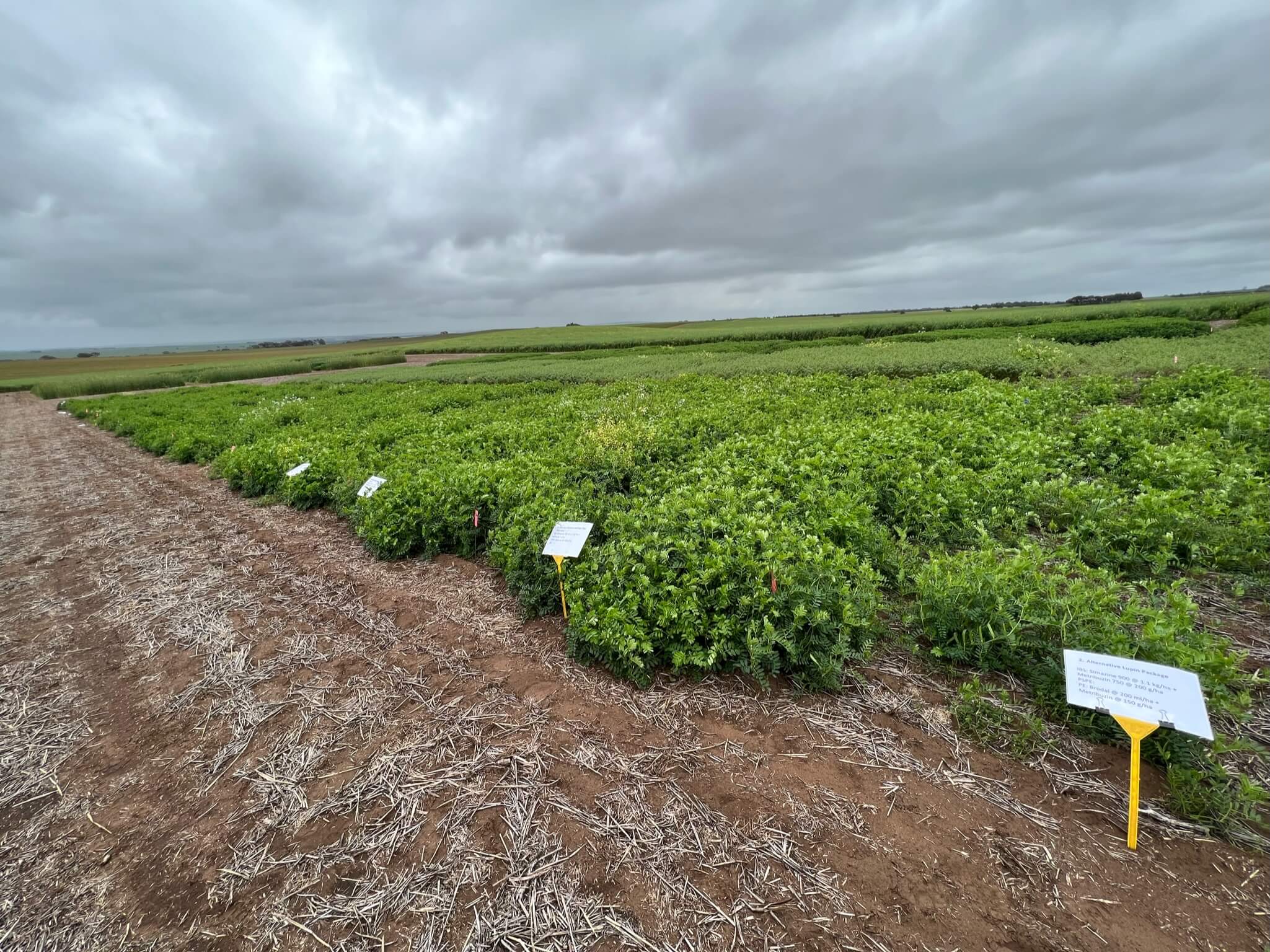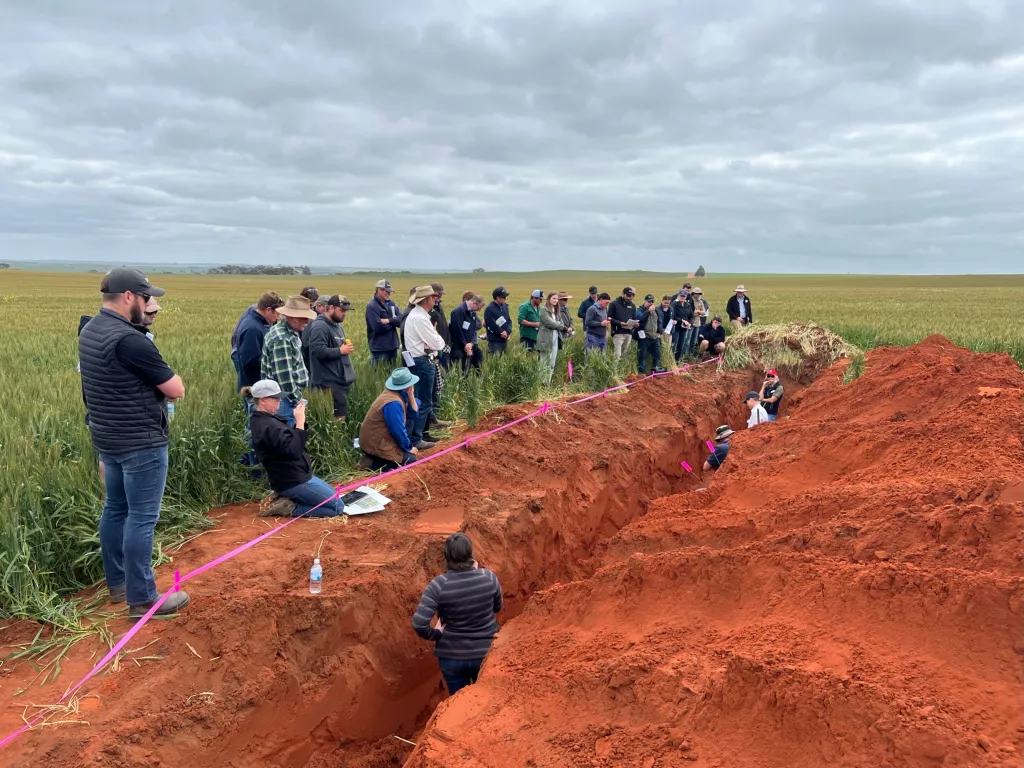Lessons from the Gillingarra FEED365 trial site
By Melanie Dixon, WMG Mixed Farming Systems Officer
At the most recent WMG farmer discussion event ‘Weathering the Dry: Perennial Edition‘, 20 farmers came together to discuss the extended dry season and how this is affecting their perennials and grazing management. Multiple sites were visited at this event, include the FEED365 demonstration site, which showcases an established perennial pasture (Rhodes and Panic grass) and oversown annual multispecies mixes.

The objective for the FEED365 Site at Gillingarra is to trial a combination of perennial and annual species to identify the most effective forage system across multiple years. The experience and learnings from each year of the project have been considered and incorporated into the plans for the following season. Since 2022 multiple difference annual species have been trialled at the site, including Barley, Oats, Triticale, Vetch, Ryegrass, Clover, Lupin and Serradella. When an annual species mix is created there is consideration of price and availability of seed, species purpose and palatability. This approach is important for managing cost in seed and fertiliser, whilst diversifying a paddock so it can be more productive throughout the year.


A standalone perennial paddock should not be active in winter, and therefore not be able to be grazed. The addition of annual species means the perennial paddock has increased feed value and grazing potential in the months when it would not usually be grazed. This helps to create a rotational grazing system, preventing other paddocks from being overgrazed, maintaining groundcover, and protecting the land. In previous WMG projects, such as the Rotational Grazing Project and BeefLinks Project, it has been found that when seeding timing and rainfall is correct, there are consistent liveweight gains where annual multispecies mixes are sown. An important aspect of this project is that there is balance between the potential of the paddock, with what is possible in the larger farming context of seasonal variability, fluctuating markets and operational costs and management.
The site at Gillingarra will continue for its third and final season in 2024. This season a mix of lupins, barley, triticale, and oats has been sown. The most important consideration this season was the cost, as the host farmer waits for market conditions to improve. Based off the results from previous years, there has been a conscious effort to use what is on hand and readily available. Legumes have been removed from the mix due to their cost, but there are hopes that some Vetch or Serradella will regenerate from previous years.


A secondary site has also been set up for the 2024 season. This site will be a large scale, demonstration paddock of 2024 sown SerraMax serradella, with the hope of it becoming a regenerating pasture. Dependent on initial plant establishment and seasonal conditions, a fast-growing cover crop may also be sown to provide groundcover and feed options. The host farmer is looking to create a ‘self-sufficient’ pasture system and already has multiple established perennial pastures.
As the season progresses there will be regular updates about both FEED365 sites, through our social media, ‘What You Missed’ newsletters and website project page as well as planned site visits and farmer discussion events.
The SheepLinks (FEED365) program is a partnership between the Department of Primary Industries and Regional Development (DPIRD) and the Meat & Livestock Australia (MLA), to underpin the future prosperity of the sheep industry in Western Australia.












